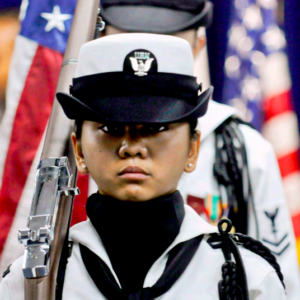For the Department of Veterans Affairs, Women’s History Month means more than just celebrating our women Veterans — it means making sure they’re proud of the role VA plays in the remaining chapters of their stories.
Women have served America as soldiers as far back as the Revolutionary War. But it’s been just over 100 years since women were first allowed to officially enlist in the U.S. military, and less than a decade since they could serve in frontline combat roles.
Women started as nurses, cooks and seamstresses for the military. But now we command ships, serve as four-star generals and are Medal of Honor recipients. Women are also the fastest-growing demographic in the U.S. Armed Forces, and the fastest-growing population VA serves.
It’s our job at VA to make sure we’re ready to serve these women warriors once they transition out of the military. And I’m proud to say we are getting the job done.
A top VA priority is making sure we provide women’s healthcare services at our hospitals and clinics, and the numbers show we are succeeding. Recent surveys show women Veterans are more likely to be screened for breast and cervical cancer at VA than at private sector facilities, and we are training more of our staff on how to deliver the benefits women Veterans have earned.
And when VA isn’t able to provide these services directly, we are helping women connect to care in the private sector — something we’re able to do more effectively now under the MISSION Act.
As a result of our efforts, women continue to enroll in and use VA. In the last fiscal year, 41 percent of all women Veterans were enrolled in VA, and we expect that number to keep climbing because women like what they see at our facilities.
Since VA started tracking outpatient satisfaction in 2017, we’ve seen women’s trust in VA climb higher and higher. In 2019, 83.8 percent of female Veterans trusted the care they got at VA, and initial data in 2020 indicates that trust score will rise to nearly 85 percent.
Women comprise about 10 percent of the Veterans we serve at VA nationwide, but that number will only increase, as women are about 20 percent of our military forces. In states like North Carolina, we’re already seeing dramatic growth in the number of women Veterans who come to VA, which has tripled since 2000.
VA facilities provide comprehensive primary care for women, as well as gynecology, maternity, specialty care and mental health services. And we’re delivering more mobile health services to women who live in rural areas. Women who aren’t getting care from VA but are curious about the services we provide can learn more at womenshealth.va.gov.
Our expanded ability to care for women means it’s important for VA to fulfill another promise: Changing the culture at our VA facilities.
For decades, VA’s principal patient base was men. But today’s VA isn’t a boy’s club. As a Veteran myself, I know how important it is for women who have worn the uniform to get the best care possible in settings where they are comfortable.
VA hospitals and clinics across the nation are working to make sure women Veterans feel comfortable and safe. We are promptly investigating all incidents that threaten to undermine women Veterans’ right to access a VA and get the care they’ve earned, and we are training our staff to handle these kinds of situations so women who have served their country are treated with respect.
What makes me most confident that VA is going to deliver what we owe our female patriots is that women aren’t just coming to VA for healthcare — they’re coming to VA to lead it.
We have women leaders in all major areas of VA, and each of them is working to build a department that cares for all our Veterans. Here at VA, women are in charge of modernization, benefit appeals, customer service, accountability and our Center for Women Veterans.
In fact, 60 percent of the total VA workforce are women, and nearly one-third of them are Veterans.
And as VA’s chief of staff, I can promise on behalf of our entire department that we will continue to build on the legacy that America’s women Veterans have carved out — by listening to them, respecting them and serving them with the dignity this country owes them.


